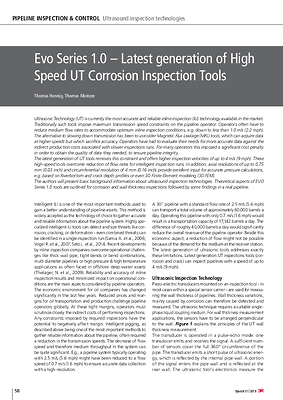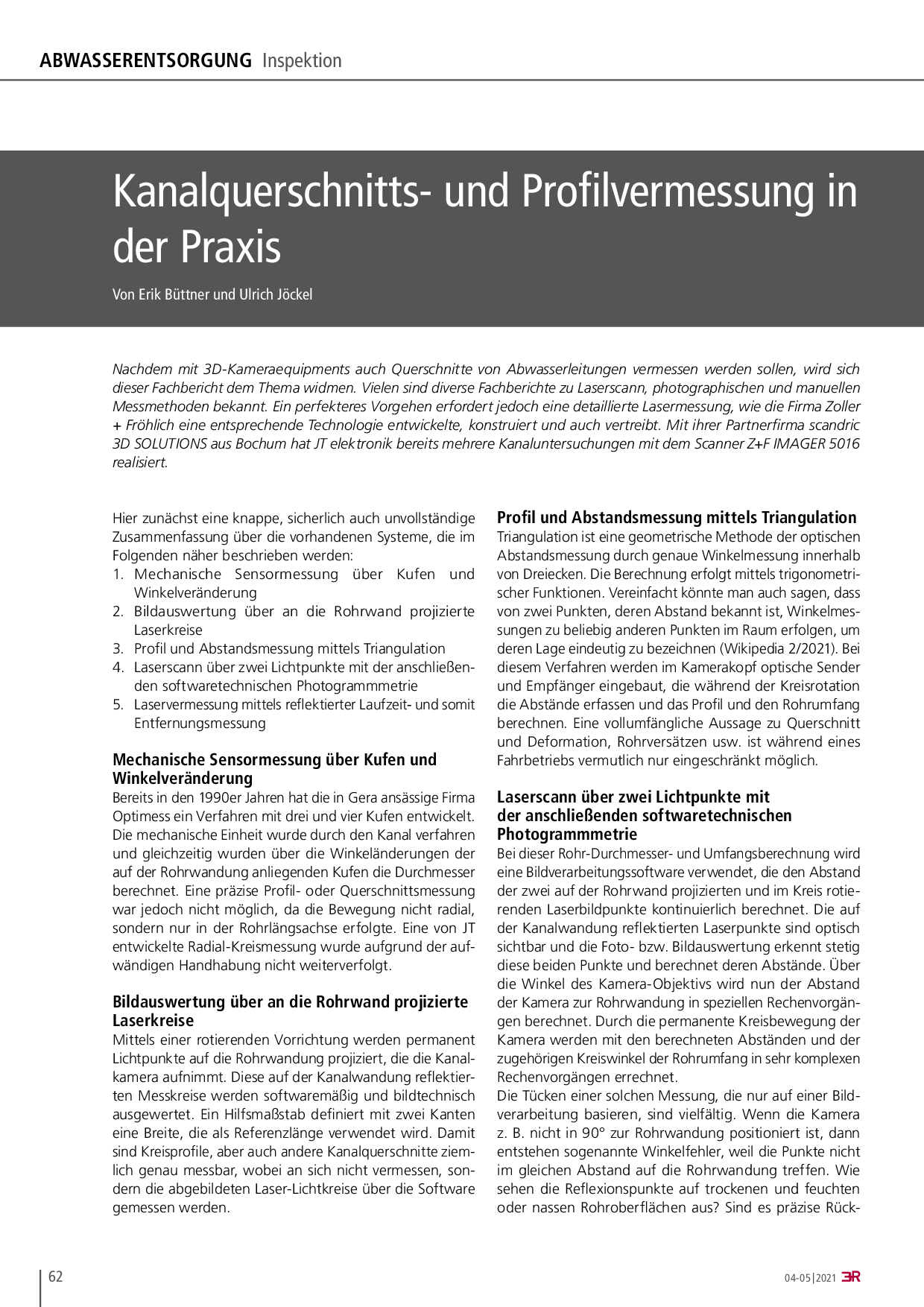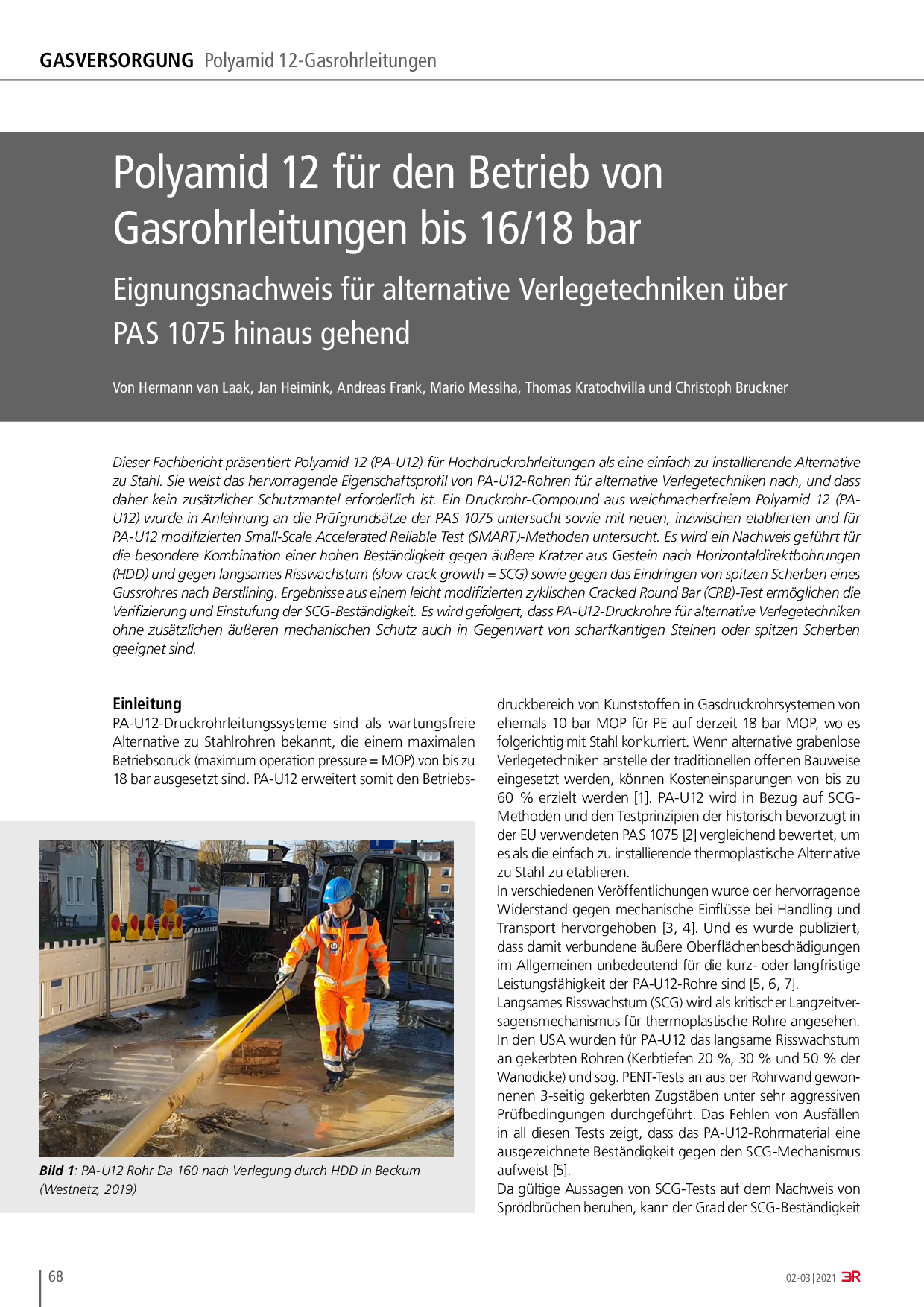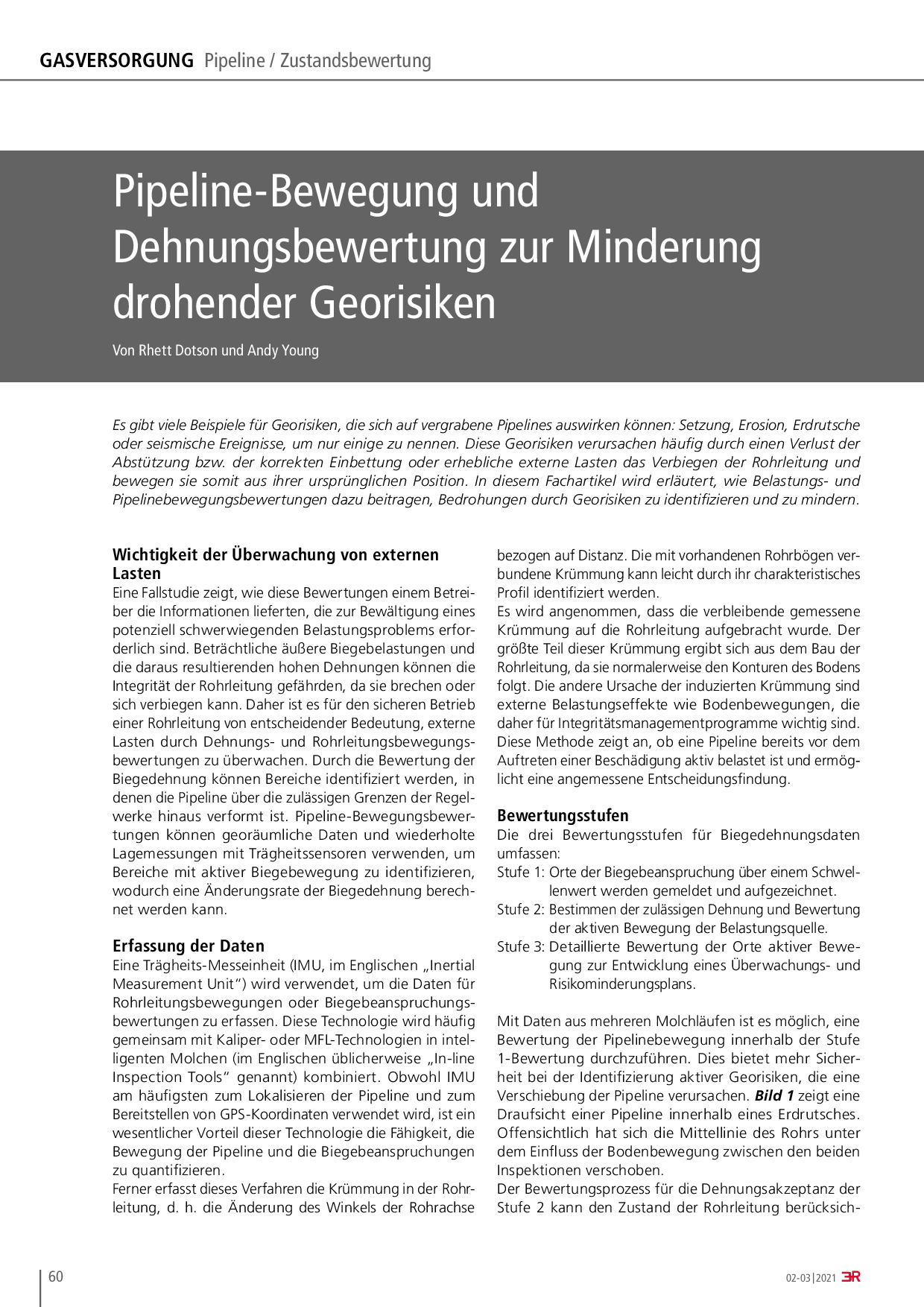Evo Series 1.0 – Latest generation of High Speed UT Corrosion Inspection Tools
Themen: Pipeline | Zustandserfassung
Publikationsform: Fachartikel
Artikelnummer: 01252_2016_SP1_08
Zeitschrift: Evo Series 1.0 – Latest generation of High Speed UT Corrosion Inspection Tools
Autor: Thomas Hennig / Thomas Meinzer
Herausgeber: Ultrasonic Technology (UT) is currently the most accurate and reliable inline inspection (ILI) technology available in the market. Traditionally such tools impose maximum transmission speed constraints on the pipeline operator. Operators often have to reduce medium flow rates to accommodate optimum inline inspection conditions, e.g. down to less than 1.0 m/s (2.2 mph). The alternative to slowing down transmission has been to use older Magnetic Flux Leakage (MFL) tools, which can acquire data at higher speeds but which sacrifice accuracy. Operators have had to evaluate their needs for more accurate data against the indirect production costs associated with slower inspections runs. For many operators this imposed a significant cost penalty in order to obtain the quality of data they needed, to ensure pipeline integrity. The latest generation of UT tools removes this constraint and offers higher inspection velocities of up to 4 m/s (9 mph). These high-speed tools overcome reduction of flow rates for intelligent inspection runs. In addition, axial resolutions of up to 0.75 mm (0.03 inch) and circumferential resolution of 4 mm (0.16 inch) provide excellent input for accurate pressure calculations, e.g. based on Riverbottom and crack depth profiles or even 3D Finite Element modeling (3D FEM). The authors will present basic background information about ultrasound inspection technologies. Theoretical aspects of EVO Series 1.0 tools are outlined for corrosion and wall thickness inspections followed by some findings in a real pipeline.
Verlag: Vulkan-Verlag GmbH
Publikationsformat: PDF
Details
Ultrasonic Technology (UT) is currently the most accurate and reliable inline inspection (ILI) technology available in the market. Traditionally such tools impose maximum transmission speed constraints on the pipeline operator. Operators often have to reduce medium flow rates to accommodate optimum inline inspection conditions, e.g. down to less than 1.0 m/s (2.2 mph). The alternative to slowing down transmission has been to use older Magnetic Flux Leakage (MFL) tools, which can acquire data at higher speeds but which sacrifice accuracy. Operators have had to evaluate their needs for more accurate data against the indirect production costs associated with slower inspections runs. For many operators this imposed a significant cost penalty in order to obtain the quality of data they needed, to ensure pipeline integrity. The latest generation of UT tools removes this constraint and offers higher inspection velocities of up to 4 m/s (9 mph). These high-speed tools overcome reduction of flow rates for intelligent inspection runs. In addition, axial resolutions of up to 0.75 mm (0.03 inch) and circumferential resolution of 4 mm (0.16 inch) provide excellent input for accurate pressure calculations, e.g. based on Riverbottom and crack depth profiles or even 3D Finite Element modeling (3D FEM). The authors will present basic background information about ultrasound inspection technologies. Theoretical aspects of EVO Series 1.0 tools are outlined for corrosion and wall thickness inspections followed by some findings in a real pipeline.
Preis: 4,90 €Zum Shop



